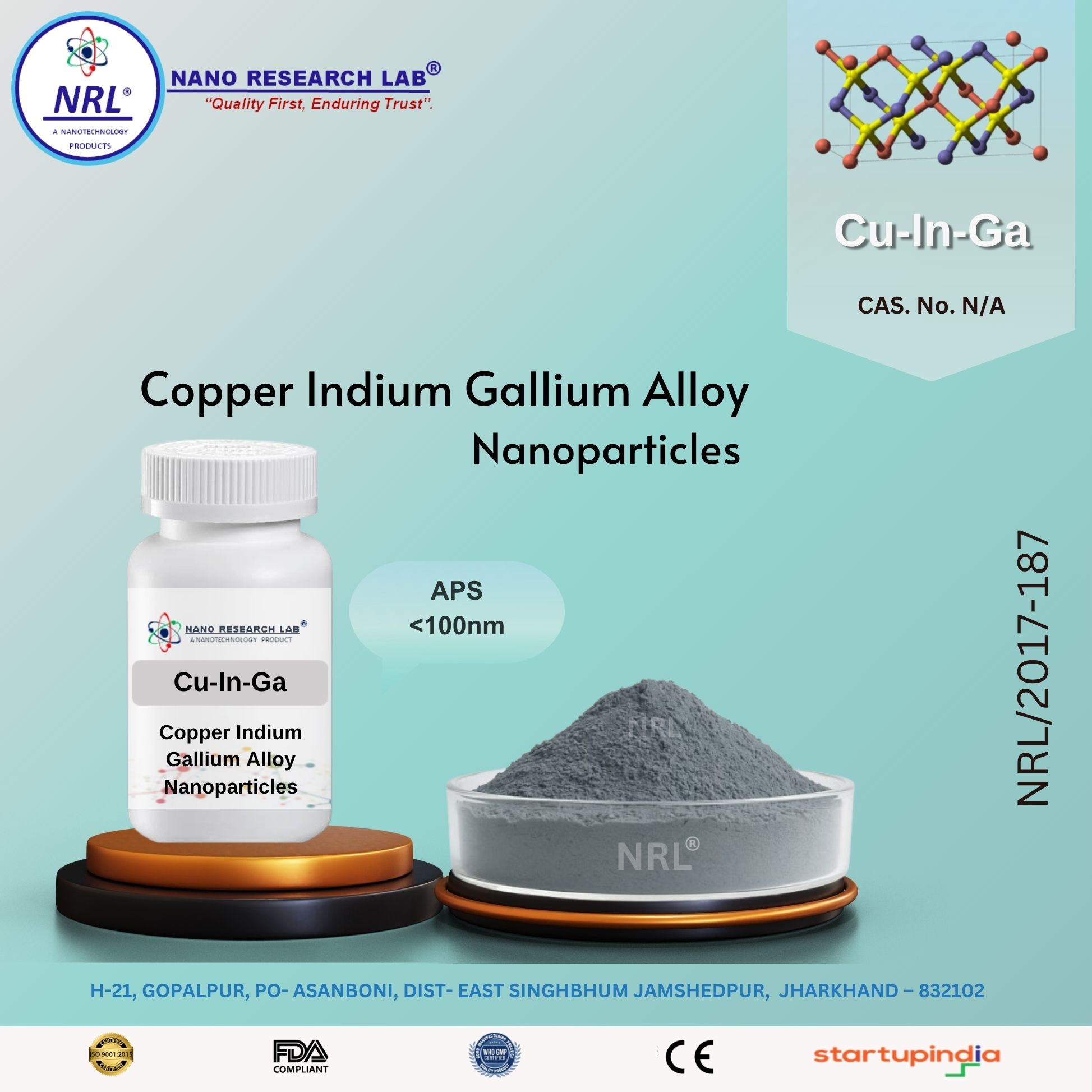
Cu-In-Ga Alloy Nanoparticles / Nanopowder (Purity 99.5%, Particle Size <100 nm)
₹1475.00
🧪 Cu-In-Ga Alloy Nanoparticles / Nanopowder (Purity 99.5%, Particle Size <100 nm)
⚙️ Technical Specifications
Property | Specification |
|---|---|
Material Name | Copper-Indium-Gallium (Cu-In-Ga) Alloy Nanoparticles |
Composition | Cu-In-Ga (customizable ratios, commonly used for CIGS applications) |
Purity | 99.5% |
Average Particle Size | <100 nm |
Appearance / Color | Grayish metallic fine powder |
Crystal Structure | Face-Centered Cubic (FCC) / Alloy structure |
Density | ~8.5–8.9 g/cm³ (depending on composition) |
Melting Point | 700–900 °C (alloy-dependent) |
Electrical Conductivity | High; suitable for electronic applications |
Thermal Conductivity | Excellent for energy and electronic applications |
Solubility | Insoluble in water; chemically stable under ambient conditions |
CAS Number | 7440-50-8 (Cu), 7440-74-6 (In), 7440-55-3 (Ga) |
Storage Conditions | Store in airtight container under inert atmosphere; protect from moisture, acids, and oxidizers |
🌟 Key Features
High-purity Cu-In-Ga nanoparticles (<100 nm)
Excellent electrical and thermal conductivity
Uniform particle size and high surface area
Good chemical and oxidation resistance
Ideal for solar, electronic, and catalytic applications
Customizable alloy ratios for specific optoelectronic performance
🔬 Applications
1. Solar & Photovoltaics
Used in CIGS (Copper Indium Gallium Selenide) solar cells
Improves light absorption, efficiency, and stability
2. Electronics & Conductive Materials
Suitable for conductive inks, adhesives, and electronic components
Enhances electrical and thermal performance
3. Nanocomposites & Coatings
Incorporated in polymers, ceramics, and hybrid materials for mechanical and thermal enhancement
4. Catalysis
Acts as catalyst or catalyst support in chemical reactions
Effective in electrochemical and energy conversion applications
5. Research & Material Science
Ideal for nanomaterial synthesis, alloy research, and optoelectronic studies
⚠️ Handling & Storage
Store in a dry, airtight container under argon or nitrogen atmosphere
Avoid contact with strong acids, bases, and oxidizing agents
Handle with gloves, protective mask, and eyewear
Use in well-ventilated areas to minimize inhalation of nanoparticles
Keep away from heat, sparks, and direct sunlight
